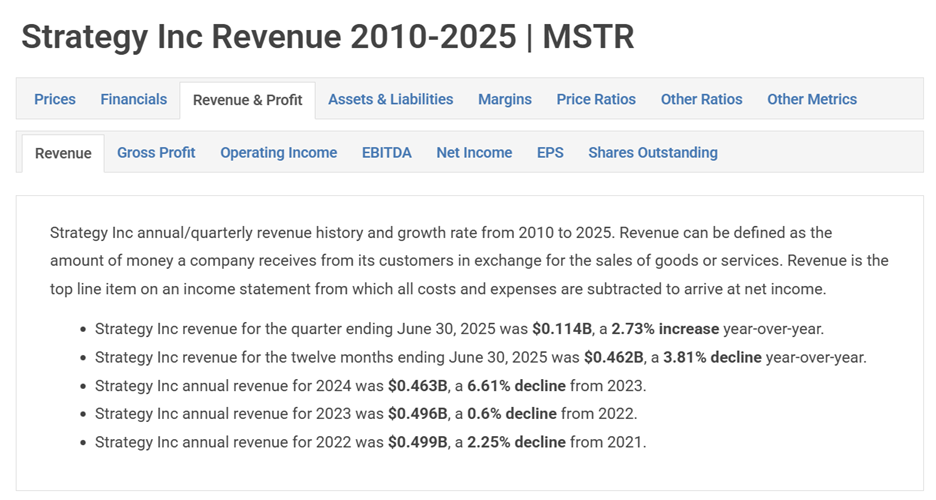Here’s What Happens When Companies Become Bitcoin Banks
 |
| By Jurica Dujmovic |
Remember when corporate treasuries were about as exciting as watching paint dry?
Back then, companies would park cash in money markets and call it conservative financial planning. But now, those days are officially over.
Today, we’re living in a world where 114 institutions hold Bitcoin (BTC, “A-”) in their treasuries. In fact, companies and governments collectively hoard nearly 1.5 million BTC worth over $163 billion.

That's roughly 7% of Bitcoin's total supply sitting in institutional vaults!
What started as one software executive's inflation hedge has morphed into the most fascinating corporate finance experiment of our time.
One that opens the door to crypto adoption and use to an entirely new demographic. And frankly, one that signals the end of an era.
Gone are the days when crypto was the domain of libertarians and tech rebels seeking self-sufficiency and independence from an overreaching government financial system.
That revolutionary, anti-establishment Bitcoin is dead. Killed not by regulators or critics, but by its own success.
When Fortune 500 companies issue debt to buy Bitcoin and put it in the same spreadsheets as their Treasury bonds, we're witnessing crypto's ultimate capitulation to the very system it was designed to replace.
When Companies Became Bitcoin Banks
The poster child of this movement remains Strategy (formerly MicroStrategy), which holds an eye-watering 632,457 BTC worth approximately $69.6 billion at current prices.
To put this in perspective: This company's Bitcoin holdings are now worth more than some countries' entire GDP!
While Strategy still operates a business intelligence software division, the company's revenue has actually declined in recent years.

Its strategy? Simple: Buy and hold Bitcoin. Issue more stock. Then, buy more Bitcoin. Rinse and repeat until you're either a genius or bankrupt.
That makes it essentially a crypto play.
But where Strategy was once a pioneer, more companies are beginning to join this digital gold rush.
MARA Holdings has built up 50,639 BTC as of August 2025. Other notable corporate holders include Tesla with 11,509 BTC.
Using crypto as a corporate treasury asset not only brings institutions into the blockchain. It also expands access for retail investors.
Want exposure to crypto but don’t want to hold the coins? You can buy stock on a treasury play … right through your existing brokerage account.
The Leverage Trap
Strategy has funded much of its Bitcoin purchases through debt issuance and equity offerings. It’s essentially running a leveraged Bitcoin fund disguised as a public company.
With current holdings of over 632,000 BTC, Bitcoin now likely represents 50%-65% of Strategy's market capitalization.
That’s a significant increase from traditional corporate treasury allocations.
This creates a fascinating feedback loop: When Bitcoin rises, the stock rises, making it easier to issue more stock to buy more Bitcoin.
But leverage cuts both ways. And corporate treasuries aren't exactly built for crypto-level volatility.
And that brings me to …
The Reflexivity and Regulatory Traps
The crypto treasury boom has created a beautiful reflexivity cycle: Corporate buying drives prices up … which attracts more corporate buying … which drives prices up further.
But reflexivity works both ways.
If Bitcoin experiences a significant decline, companies with major holdings could face liquidity crises, forced selling and shareholder revolts.
The same corporate buying that's supporting prices could become corporate selling that crashes them.
And that will have an outsized impact on the market as this strategy flies in the face of decentralization.
With 114 institutions holding 7.09% of Bitcoin's total supply, we have a significant centralization threat.
What happens when Michael Saylor decides to take profits? Or when a major ETF faces redemption pressure?
The same concentration that's driving prices up now … could create spectacular fireworks on the way down.
Additionally, corporate Bitcoin holdings exist in a regulatory gray area. And that reality could shift overnight.
Accounting rules, tax treatment and banking regulations around crypto are all evolving. Public companies must use market-to-market accounting for crypto investments.
This means Bitcoin volatility flows directly to earnings statements.
Imagine explaining to shareholders why quarterly earnings swung by $2 billion because Bitcoin had a bad month.
What This Means for the Average Investor
For retail investors targeting crypto directly, the corporate treasury boom offers some compelling advantages:
- Legitimacy Premium: When blue-chip companies and university endowments own Bitcoin, it's harder for regulators to treat it like internet funny money.
- Supply Scarcity: Corporate HODLers typically aren't day-trading their treasury assets, which creates artificial scarcity that could support higher prices.
- Infrastructure Benefits: Institutional demand drives better custody, clearer regulations and more sophisticated trading infrastructure that benefits everyone.
But there are risks retail investors need to understand, as well:
- Price Maker versus Price Taker: When corporate whales control significant supply, retail investors become price takers in a market increasingly dominated by institutional flows.
-
Volatility Amplification: Spot Bitcoin ETFs may have unlocked institutional adoption, but they’ve also created a new channel for volatility. If investors suddenly pull capital — whether in a broad risk-off environment or because Bitcoin sentiment sours — ETF issuers like BlackRock or Fidelity are forced to redeem shares by delivering cash.
That means their custodians must sell actual Bitcoin into the market, often in large blocks and on short notice. In a stressed environment, those redemptions can magnify price swings far more violently than retail selling and turn Wall Street’s gateway product into an accelerant for volatility.
- Correlation Risk: As more traditional companies tie their fortunes to Bitcoin, crypto markets may become more correlated with equity markets, reducing diversification benefits.
The Bottom Line: Revolution or Bubble?
The crypto treasury boom may mark the beginning of Bitcoin’s transformation from speculative asset to global reserve currency.
On the other hand, it could prove to be the most elaborate bubble in corporate finance history.
Either way, institutions are betting big. Strategy’s ~632,000 BTC stash dwarfs every other corporate holder, while institutions collectively control more than 7% of Bitcoin’s total supply according to CoinGecko.
These aren’t numbers any serious investor can ignore.
For investors, the real question isn’t whether this trend continues, but whether you want exposure to what could be the most significant shift in treasury management since companies first began holding foreign currencies.
Best,
Jurica Dujmovic
P.S. With institutions now firmly in the crypto market, their influence can make the next crypto rally run in a way we’ve never seen before.
And it makes catalysts like the upcoming Federal Open Market Committee meeting even more important to watch.
If the Fed announces a rate cut on Sept. 17, it could open the floodgates of liquidity into crypto … and set the stage for a bull run you’ll be hard pressed to catch once it starts.
That means the time to prepare is now. Which is why Weiss Ratings founder Dr. Martin Weiss is hosting an urgent crypto briefing on Tuesday, Sept. 2 at 2 p.m. Eastern.
In it, he and crypto expert Mark Gough will show you how to position yourself to catch this wave … before the Fed's decision on Sept. 17 potentially accelerates this entire rotation.
This event is free for our members. Just be sure to save your seat.

